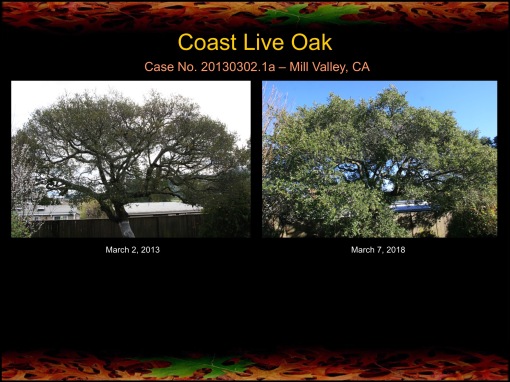

The first two photo sets above are of an oak in Mill Valley, CA that I began treating 5 years ago using fire mimicry. This oak has made significant improvement, as was already documented two years ago here.
The photo sets below are of three coast live oaks, and two coast redwood trees first treated with fire mimicry last year (2017). The first of the series shows a young coast live oak that has lost some leaf density in its canopy. This is an atypical result which may be corrected with further treatments. The other photos sets show an ancient, Native American-era coast live oak that is showing significant improvement in canopy density in just one year. Another mature coast live oak, despite having a major limb removed, is showing slight improvement. And two coast redwood trees are also showing slight improvement in just one year.






Recent Comments